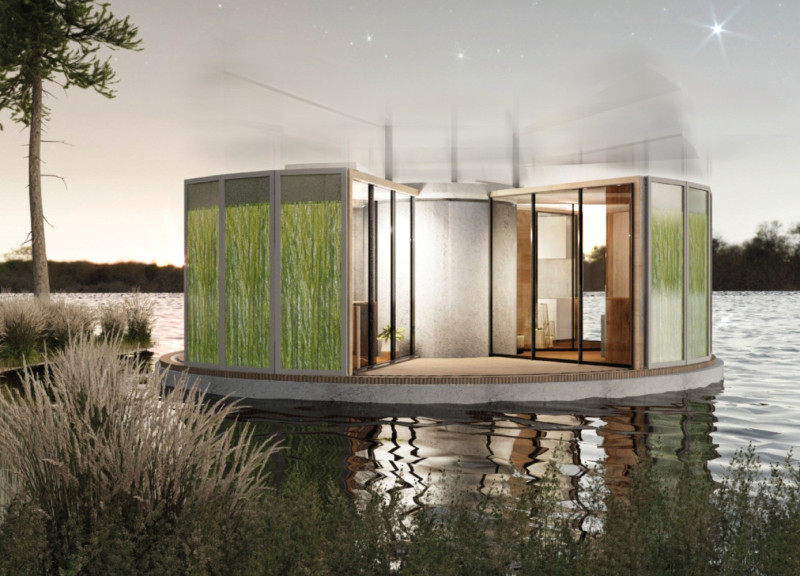5 key facts about this project
The design features a multifunctional living space focused on adaptability and energy efficiency. Located in a setting that accommodates both solid ground and water, the building consists of three rotatable modules. These modules allow residents to tailor their living environment based on their needs. The overall concept centers around the idea of sustainability, making use of innovative energy strategies while providing a flexible and dynamic interior.
Energy Generation
The building incorporates solar modules on the roof. These can be adjusted to capture sunlight effectively throughout the day. In addition, the modules can function as rotor blades, utilizing wind to generate energy through a central generator. This combination of solar and wind energy reflects a strong commitment to sustainable living practices.
Bioreactor Facade
Vertical elements of the facade feature surfaces designed for bioreactors, where algae can thrive. Using solar energy, these algae produce biomass that is converted into biogas. This biogas fulfills some of the building's energy requirements through a fuel cell. This aspect of the design emphasizes the integration of biological processes, contributing significantly to the building's energy sustainability.
Technical Infrastructure
At the core of the building is a technical room, which houses essential components for energy storage, including batteries, a generator, and a fuel cell. This centralized arrangement helps manage the energy produced by the building efficiently, ensuring that it powers both living spaces and water heating systems. This infrastructure promotes a responsive and effective energy management system.
The choice of bioconcrete as the primary structural material supports plant growth. The design encourages the growth of moss, lichen, and mushrooms, all of which improve air quality and insulation. The use of wood in other parts of the structure complements these efforts, highlighting a focus on sustainability and a connection to nature in the overall design.



















































